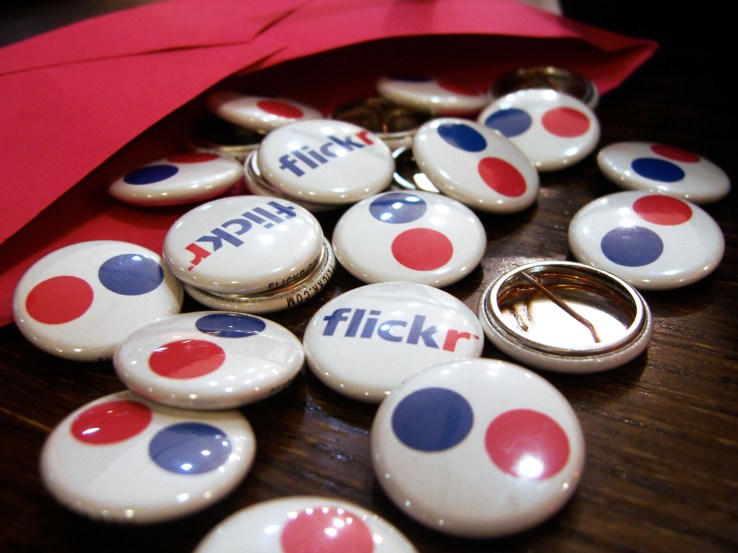At a media event in Germany, Royal Caribbean announced the technology advances coming to its newest cruise ship, Quantum of the Seas.

SMART Check-in
Before you even get onboard your cruise, guests can generate boarding documents online, upload their own ID photo, and receive digital boarding confirmation. By the time they arrive at the cruise terminal for departure, Royal Caribbean guests can go from “sidewalk to ship” in 10 minutes with no check-in counter, no forms to fill out and no lines to stand in.
Guests will be able to track luggage in real time on their smartphones. Luggage will be tagged curbside with RFID technology at drop-off, and guests can monitor their bags’ progress through key points en route to the stateroom. On departure, the process is reversed.
SMART Concierge: Flexibility at your fingertips
Quantum of the Seas will offer new RFID WOWband wristbands, which require only a simple tap to quickly navigate the ship, make onboard purchases, serve as the room key and more.
Simplicity and efficiency are also at the heart of two new apps that put guests in charge of their cruise choices: Cruise Planner, which allows guests to research and book dining reservations, shore excursions, spa appointments and more before their vacation begins; and Royal iQ, available as a downloadable app and provided at freestanding iQ stations around the ship. Royal iQ allows guests to manage details during the cruise, includes a convenient calendar that provides at-a-glance views of their program, and keep in touch with one another and home via phone and text capabilities.
“Every vacation minute counts, especially on Quantum of the Seas where there is so much to see and do,” said Lisa Lutoff-Perlo, Executive Vice President, Operations, Royal Caribbean International. “Guests can now tailor everything about their cruise in advance, so they can start enjoying their vacation the minute they step onboard. In essence, they get back the first day of their cruise.”
Taken together, these features take the company’s time-saving efforts to a new level,” Lutoff-Perlo said. “Every minute we can save our guests is another minute of their vacation they have to enjoy.”
SMART Connect: Downloads at the speed of modern life
Quantum of the Seas will operate with unprecedented bandwidth using satellites launched by tech partner O3b Networks. With speeds that match fast broadband connections onshore, guests can be online 24/7, no matter what personal device they bring onboard. Guests can watch streaming video, check email, share images on social media and enjoy face-to-face video conversations – even in the middle of the ocean.
“Even when they are getting away from it all on vacation, people want to be able to connect,” said Lutoff-Perlo. “Our satellite network will make things possible at sea that could never have been done before, and will make all the difference in the way guests share their Royal Caribbean experience.”
In addition, Quantum’s connectivity makes it possible for one of the SeaPods in SeaPlex to become a live global video gaming suite where guests can enjoy Xbox Live and compete with other gamers worldwide.
SMART Experiences: Shaking martinis and spinning screens

Technology also powers surprise-and-delight elements on Quantum of the Seas. A brand new venue, Bionic Bar, is set to make waves with robots at center stage. Guests place orders via tablets and then have fun watching robotic bartenders hard at work mixing cocktails.
Robots drive another entertaining feature on Quantum of the Seas. Two70 is home to a playful and agile troupe of six Roboscreens that stage surprise performances during every cruise, creating scenes while soaring and twisting solo, or uniting as one. Guests will also experience Vistarama, floor-to-ceiling glass walls that transform into an expansive ambient surface that projects any scene, real or imagined, including the multidimensional performance spectacle, Starwater.
Quantum of the Seas will take advantage of technology in functional forms as well. Guest staterooms are equipped with device-charging USB outlets, as well as energy efficient and environmentally friendly lighting systems. Interior accommodations are outfitted with Virtual Balconies that display real-time sights and sounds of the sea through 80-inch LED screens, ensuring every stateroom has a view.
SMART Service: Crew can connect better with guests – and with home
The technology benefits of Quantum of the Seas extend to the ship’s crew. Custom apps will allow crew members to keep better track of guests’ tastes and preferences, allowing staff to tailor their already remarkably personalized service to an even higher degree. Whether a guest prefers gluten-free dining, early show seating, or shiatsu massage, the features of the smart ship allow crew members to anticipate every need.
And the ship’s remarkable capabilities give the company an opportunity to make life better for crew members too, since Royal Caribbean will present every crew member on Quantum of the Seas with a free, personal Microsoft Windows tablet, with a suite of services and apps that is theirs to keep. And as technology upgrades are made across the company’s fleet, every shipboard employee in the entire Royal Caribbean International fleet will also receive their own tablet – a total of 40,000 tablets.
“The Royal Caribbean men and women who provide such great vacations are the real heroes of our fleet and these gifts demonstrate our appreciation in a tangible way,” Fain said. “This technology isn't only about giving our guests a better vacation – it’s also about giving our crew and their families a closer connection than we’ve ever been able to”
SMART Sustainability: Cleaner and greener
Technology has even played a part in making the ship more environmentally friendly. Sophisticated computer modeling was used to reduce the vessel’s energy consumption with efficient hull configuration, engine design and energy saving devices. The ship has eliminated the use of incandescent bulbs; all lighting will be provided by low-energy LED or fluorescents. Motion sensors even dim hallway lighting when no one is present.








